
Do you want WordPress to redirect your 404 page to your home page? Your bounce rate can be decreased and users can find more relevant content on your website by redirecting the 404 “Not Found” page to your home page.
This post will demonstrate how to use WordPress to redirect your 404 page to your home page.
Why redirect your WordPress home page from your 404 page?
WordPress will display a 404 error page when a user attempts to access a page that doesn’t exist on your website. Depending on the theme you are using, this page’s language and design may change.

The majority of visitors that arrive at your site’s default 404 page will depart it immediately. This could lower your search engine ranks and raise your total bounce rate.
Because of this, you ought to spend some time making a unique 404 page. However, you may utilize the tutorial’s shortcut to send them to the homepage until you accomplish that.
Additionally, in an ideal scenario, you would reroute particular 404 error requests to the most pertinent pages.
Let’s now examine how to direct all 404 errors to your home page in WordPress. We’ll go over two approaches and demonstrate how to design unique redirects for certain pages.
Use WordPress to redirect all 404 errors to the home page
We’ll be using All in One SEO for WordPress (AIOSEO) for this technique. You may create redirects, improve your content for search engines, and more using the finest WordPress SEO plugin.
Installing and activating All-in-One SEO (AIOSEO) is the first thing you need to do. See our step-by-step tutorial on installing a WordPress plugin for more information.
Redirect is a Pro plugin for All in One SEO, therefore even if there is a free version available, we will be using it.
You must navigate to All in One SEO » Redirects after activating the plugin.
You must click the ‘Activate Redirects’ button if you haven’t configured redirects.
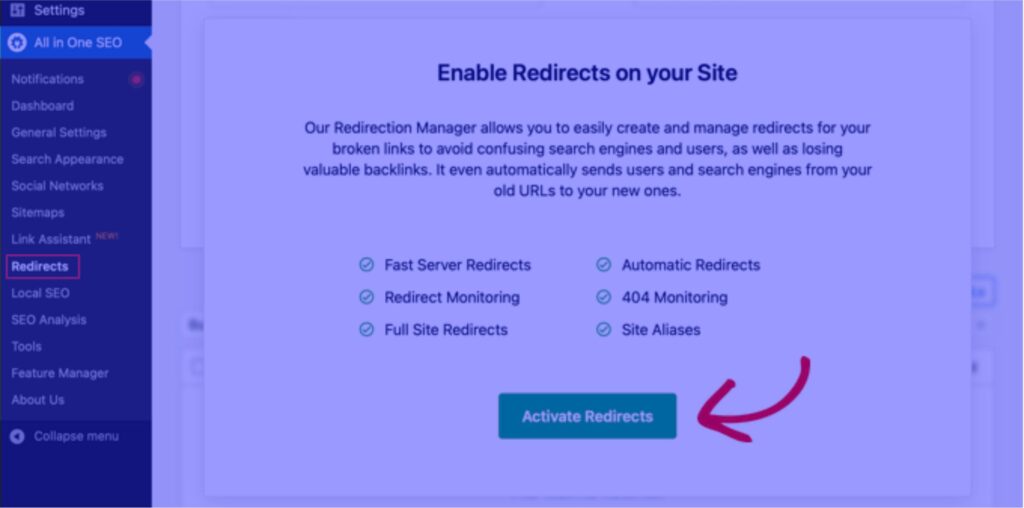
This will set up the Redirects module for All in One SEO.
The ‘Settings’ tab is located at the top of the page. This page allows you to configure redirects in AIOSEO.
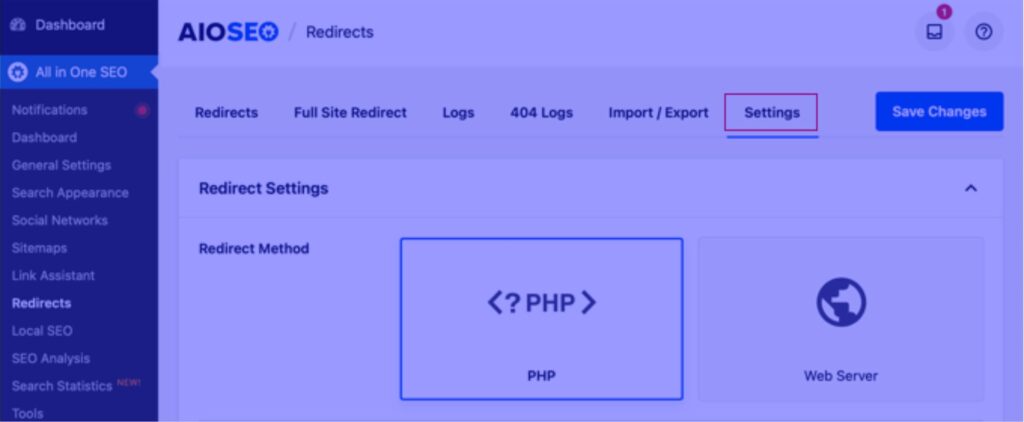
The ‘Advanced 404 Settings’ area can be found by scrolling down the page. Simply click the toggle button until it turns blue to activate this section.
More settings will now be shown to you. The ‘Enable default 404 redirects’ button needs to be turned on. Next, confirm that the ‘Home Page’ option is chosen.
Also Read: How to Fix the Error Establishing a Database Connection in WordPress
Also Read: Step By Step Ultimate Guide To SEO
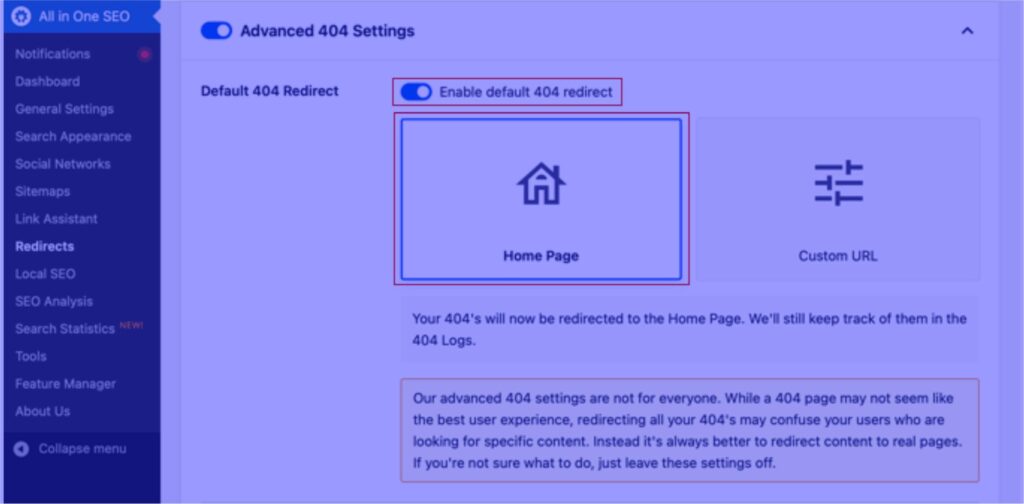
A ‘Custom URL’ option is also available, as you can see. Using this technique, you may now direct 404 errors to any post or page. To save your settings, don’t forget to click the ‘Save Changes’ button at the top or bottom of the page.
Now, instead of viewing the normal 404 page, visitors who attempt to access a URL on your website that is invalid will be directed to the home page.
Use Code to Redirect All 404 Errors to the Home Page
All 404 pages can be forwarded to the homepage using a little piece of code if you’d rather not utilize a plugin.
You must edit your WordPress files to add code using this technique.
You must first create a new file with the name 404.php in your WordPress theme folder. You must modify the 404.php file that currently exists in your theme if it does.
You must sign into your WordPress account in order to change this file.
Also Read: How to Display Facebook Page Reviews on a WordPress Website
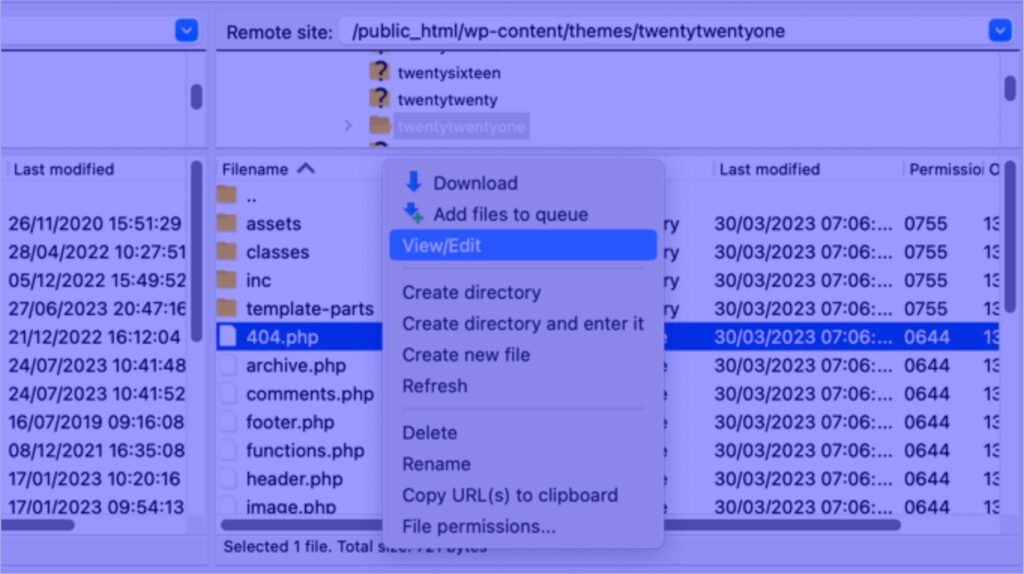
The 404.php file in your WordPress themes folder will be visible after you are linked to your website.
Your 404.php file has to have the following code included as the first line:
The 404.php file should then be saved and uploaded once more to your theme directory through FTP or your hosting control panel.
Instead of a 404 page, visitors will now be sent to your WordPress home page when a page cannot be found.
Using AIOSEO to Configure Custom 404 Page Redirects
Redirecting visitors to the most pertinent page, not just your homepage is the best and most SEO-friendly strategy to handle 404 issues.
The Redirects function of the All in One SEO plugin also tracks all 404-page problems and enables you to configure clever 404-page redirects in WordPress.
All you have to do is go back to the All in One SEO » Redirects page and click on the ‘Settings’ tab if you installed and activated AIOSEO when you used Method 1.
Then, continue to browse until you reach the “Logs” area. Your 404 logs are a record of the URLs that users have attempted to use to access pages on your website that are no longer there.
Ensure that the ‘404 Logs’ toggle is set to “on” so that it appears blue. Additionally, you can choose how long the plugin should save your logs by choosing the time period from the dropdown menu.
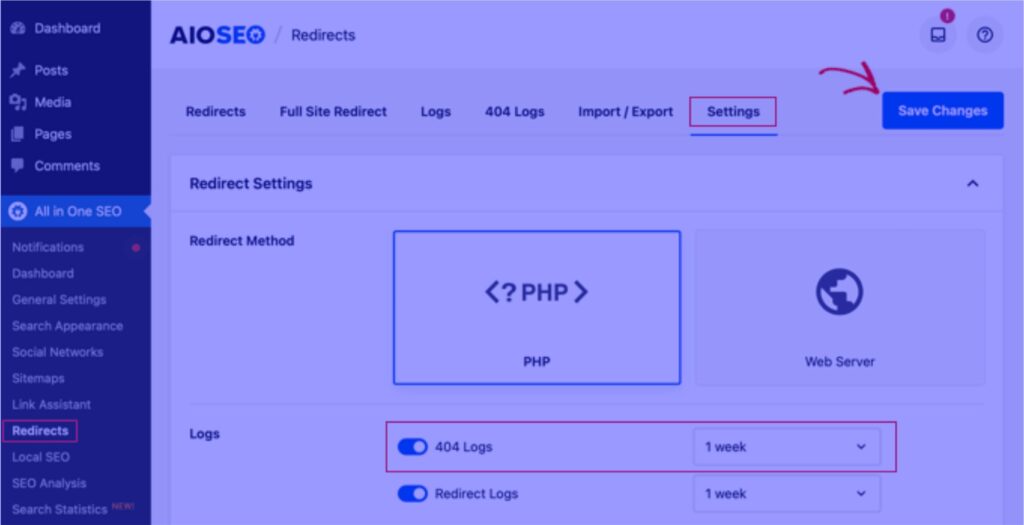
Before continuing, don’t forget to click ‘Save Changes’.
After that, you can view the most recent 404 page accessed by selecting the ‘404 Logs’ menu item.
Keep in mind that since you just enabled logging, nothing might appear immediately away. Before you see any insightful information there, you might have to wait up to 24 hours.
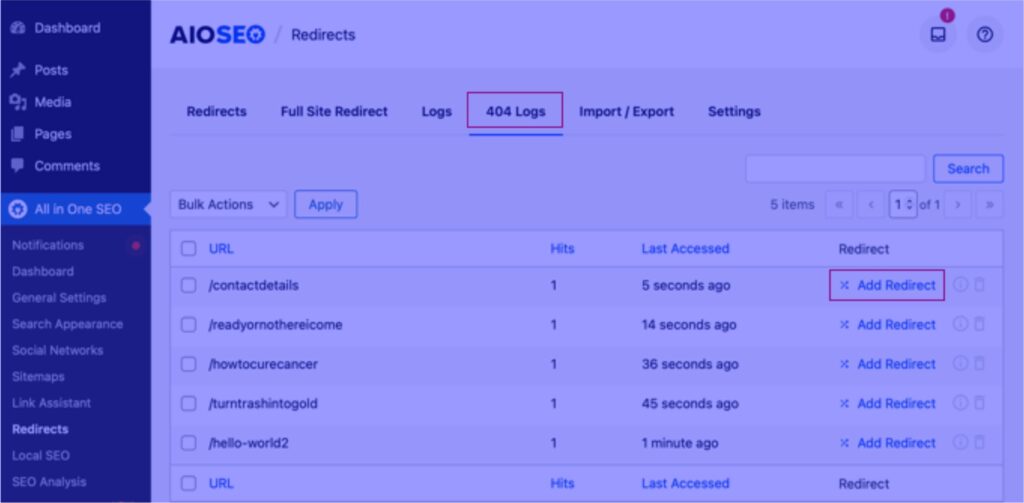
You may view the pages people attempted to access but which are not available in the ‘URL’ column.
By selecting the ‘Add Redirect’ link under the ‘Redirect’ column, you can direct any URLs to an already-existing website. This will bring up a dropdown where you can enter the details of your redirect.
The most pertinent page for the original query must be entered in the “Target URL” box before clicking “Add Redirect” for optimum results.
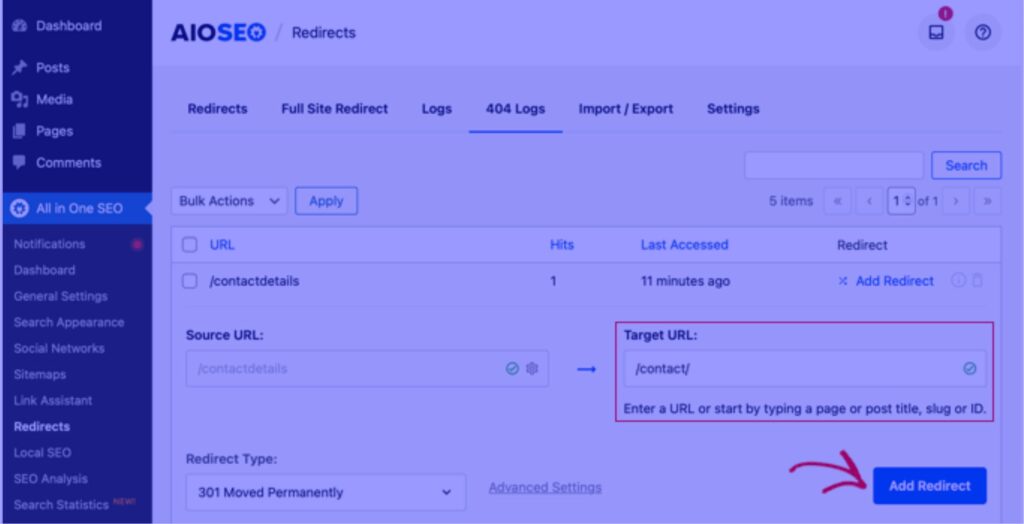
It’s best to redirect an old URL to a new blog post rather than your homepage, for instance, if you deleted a tutorial on how to start a WordPress blog and then wrote a new one.
Remember, generally, you don’t want to redirect your 404 page to your home page forever. It’s a terrific temporary solution until you construct a bespoke 404-page design that will convert better or set up specific redirects that take users to a relevant page that does exist.
We sincerely hope that this post has taught you how to redirect your WordPress 404 page.